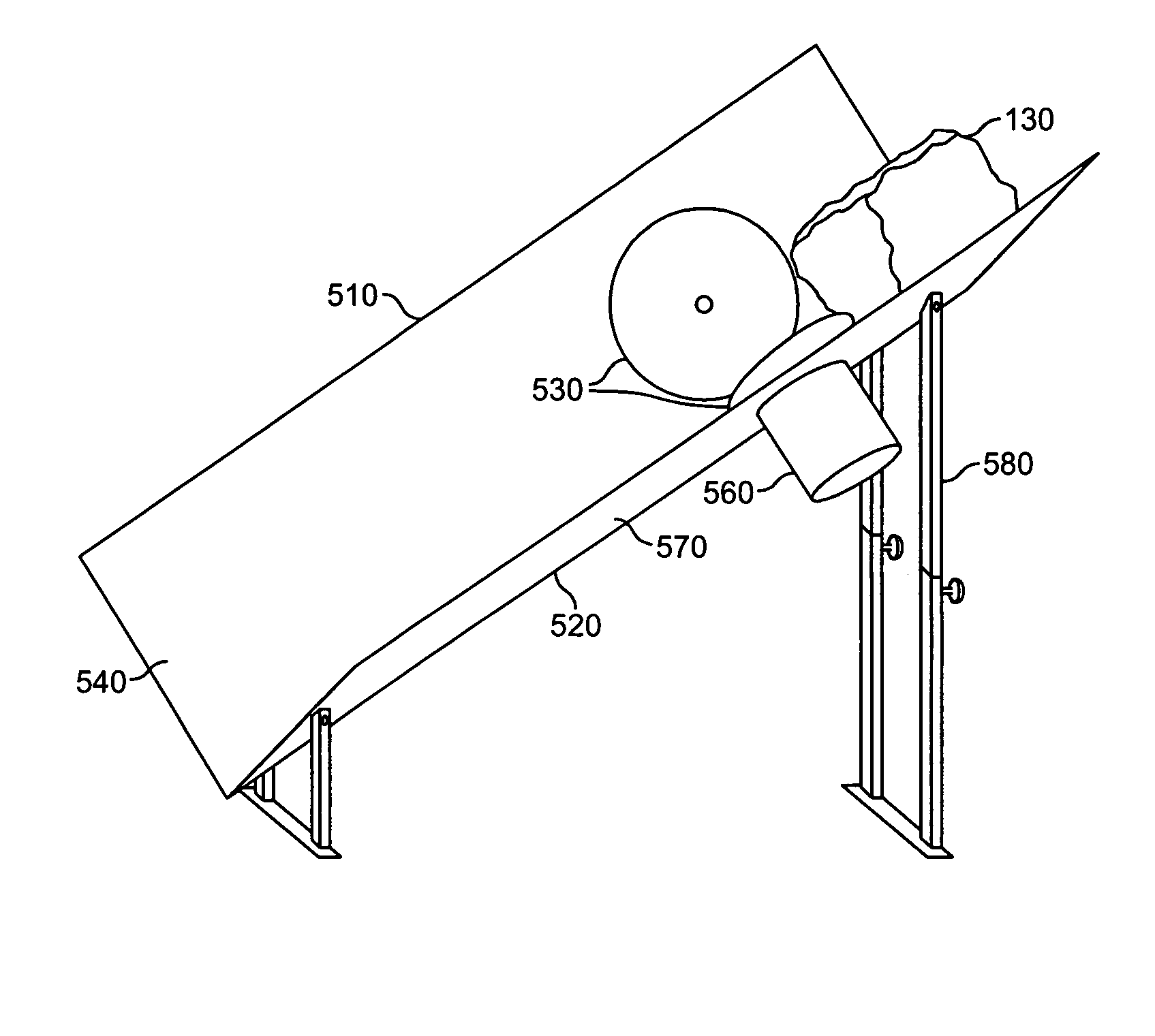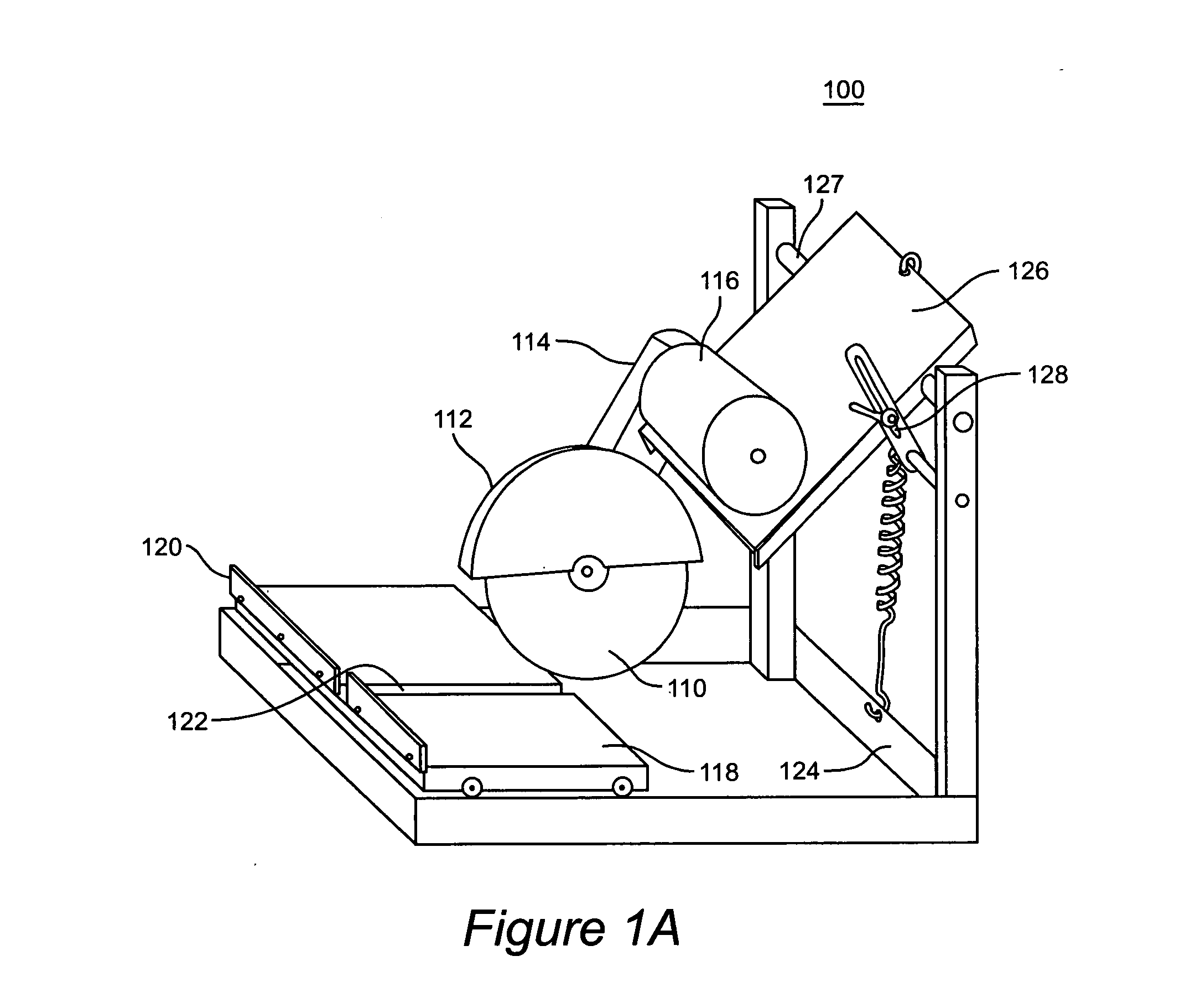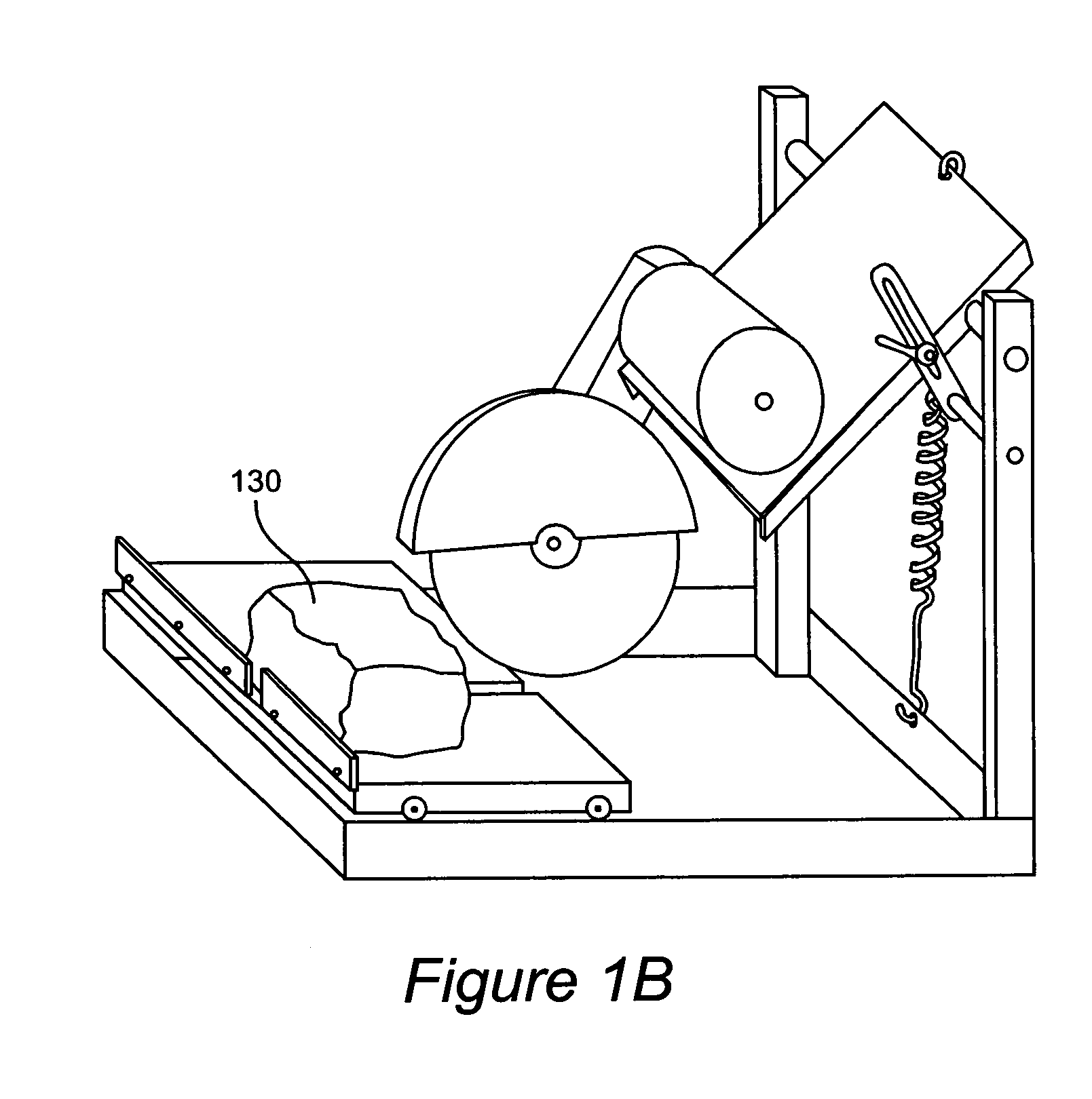Method for manufacturing non-seamed stone corners for veneer stone surfaces
a technology of veneer stone and non-seamed stone, which is applied in the field of stone masonry, can solve the problems of unsightly joints of thin stone on the outside corners of walls, expensive buying of building stone, and inconvenient manufacturing of thin ston
- Summary
- Abstract
- Description
- Claims
- Application Information
AI Technical Summary
Benefits of technology
Problems solved by technology
Method used
Image
Examples
Embodiment Construction
[0026]Stone corners in accordance with the invention can be made with two types of common masonry saws. The stationary saw 100 as shown in FIG. 1A can cut either wet or dry. Stone can also be cut with a hand held saw (not shown). Utilizing recent breakthroughs in stone saw blade technology, the stationary saw is the easier, safer and faster saw for implementing the invention. As shown in FIG. 1A, the stationary saw assembly includes a motor 116 connected by a drive arm 114 to saw blade 110, which is protected by a saw blade safety cover 112. The saw blade 110 is adjusted to a desired vertical height by rotating platform 126 about axis 127 and tightening adjustable brace 128. The saw blade 110 remains stationary during the cutting process. A workpiece (shown as item 130 in FIG. 1B) is placed on table 118 abutting front stop 120. Table 118 has a groove 122 to allow cutting through a workpiece.
[0027]Now turning to FIG. 1C, using a typical 14 inch saw blade machine (stationary saw assem...
PUM
| Property | Measurement | Unit |
|---|---|---|
| depth | aaaaa | aaaaa |
| depth | aaaaa | aaaaa |
| depth | aaaaa | aaaaa |
Abstract
Description
Claims
Application Information
 Login to View More
Login to View More - R&D
- Intellectual Property
- Life Sciences
- Materials
- Tech Scout
- Unparalleled Data Quality
- Higher Quality Content
- 60% Fewer Hallucinations
Browse by: Latest US Patents, China's latest patents, Technical Efficacy Thesaurus, Application Domain, Technology Topic, Popular Technical Reports.
© 2025 PatSnap. All rights reserved.Legal|Privacy policy|Modern Slavery Act Transparency Statement|Sitemap|About US| Contact US: help@patsnap.com



